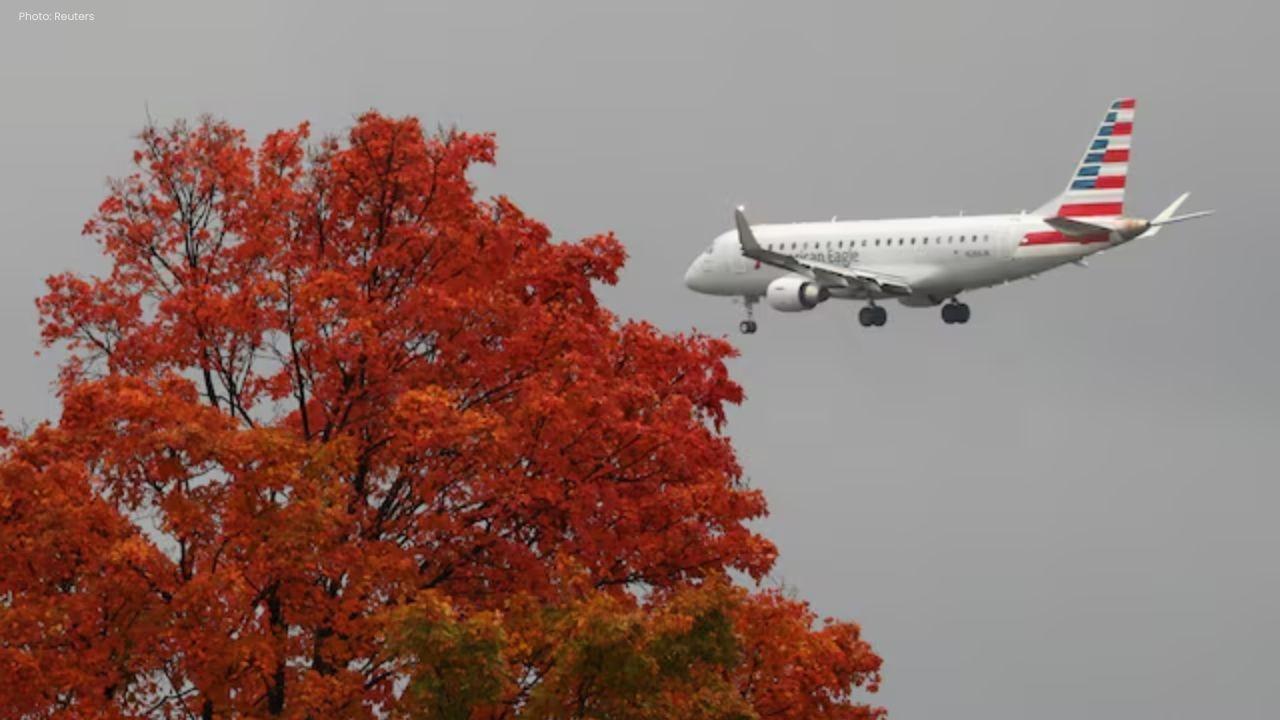
Join 10k+ people to get notified about new posts, news and tips.
Do not worry we don't spam!

Post by : Anis Farhan
Datong, a city once synonymous with coal and industrial grit, is now being reimagined as a cultural gem in China’s northern interior. Located in Shanxi province, Datong is no longer just a waypoint for domestic pilgrims visiting ancient temples—it’s becoming a destination in its own right, attracting international travelers drawn by the city’s storied heritage, dramatic landscapes, and, most importantly, China’s new visa-free travel policy.
As Beijing loosens visa rules for citizens from countries like Germany, France, Malaysia, and Thailand, it’s not just megacities like Shanghai or Beijing benefiting. Second-tier cities such as Datong are experiencing a tourism renaissance, as international tourists now have more freedom and incentive to explore beyond the major urban hubs. Datong, with its blend of ancient Buddhist artistry, fortress ruins, and atmospheric old towns, is emerging as a key beneficiary.
This transformation of Datong isn’t accidental—it’s a carefully crafted blueprint showcasing how visa-free policies can be leveraged to boost regional tourism, cultural identity, and local economies.
At first glance, Datong may not appear to be a tourist hotspot. Once dubbed the “coal capital of China,” the city was for decades seen as an industrial zone—polluted, gritty, and off the radar for global travelers. But behind its dust-streaked exterior lay centuries of rich Buddhist heritage, including the breathtaking Yungang Grottoes, a UNESCO World Heritage site with over 50,000 statues carved into sandstone cliffs dating back to the 5th century.
Today, those historic gems are getting global attention. The city's investments in infrastructure, hospitality, and cultural conservation are finally paying off. New high-speed rail links, boutique hotels with imperial-style courtyards, and a buzzing cultural calendar are attracting a new demographic of international visitors who crave authenticity and depth.
Datong’s appeal lies in its unfiltered, immersive experience—a contrast to China’s glitzy coastal megacities. Tourists can stroll through the restored city wall at twilight, visit a temple-turned-art gallery in a back alley, and enjoy Shanxi-style hand-pulled noodles at a family-run eatery—all within walking distance.
In recent months, China has aggressively expanded its visa-free travel agreements, particularly with Southeast Asian and European nations. These policies are not just about tourism—they’re also soft power tools, part of Beijing’s broader post-pandemic economic revival strategy.
While Chinese outbound tourism has taken time to rebound, inbound tourism has become the new frontier. Cities like Datong are capitalizing on this shift by positioning themselves as entry points into “authentic China”—places where history isn’t curated but lived.
Datong’s tourism bureau has rapidly adapted to the opportunity. Multilingual signboards, international airport shuttles, digital QR-based museum guides, and collaborations with overseas travel influencers are all part of the city’s strategy to convert visa-free travelers into cultural ambassadors.
Tourism isn’t just boosting visitor numbers—it’s reviving Datong’s cultural economy. In recent years, the city has witnessed:
A surge in heritage restoration jobs, particularly around Buddhist temples and Ming-era walls.
A revival of traditional crafts, such as shadow puppetry and silk embroidery, sold in local markets.
The emergence of art cafes, storytelling workshops, and cultural hostels operated by young entrepreneurs.
This economic revival is not only about preserving culture; it’s about reimagining it for the global stage. Datong’s local government has launched “Culture First” tourism campaigns, emphasizing curated experiences over mass-market packages. International tourists can now enroll in Buddhist sculpture carving classes, participate in calligraphy retreats, or join guided tours led by local historians.
In doing so, Datong is creating a new kind of tourism—less transactional, more transformational.
While the first wave of new visitors came from nearby Southeast Asian nations—particularly Malaysia, Thailand, and Singapore, whose citizens now benefit from expanded visa-free entry—the demographic is rapidly diversifying. Younger travelers from Europe, solo travelers, cultural retirees, and hybrid digital nomads are also discovering Datong.
For many, Datong offers an alternative to China’s better-known urban centers. It’s quieter, cheaper, and steeped in unfiltered history. Social media has played a role, with Chinese and international influencers showcasing Datong’s peaceful temples, cave art, and ancient alleyways in stark contrast to Beijing’s crowds or Shanghai’s neon-lit skyline.
The fact that travel logistics have drastically improved is a game changer. From Beijing, Datong is now just 2 hours away by bullet train. A new expressway and regional airport expansion have further smoothed the journey for international tourists, even those arriving from second-leg destinations like Xi’an or Hangzhou.
Datong’s strategic makeover is part of a larger national experiment in using cultural tourism to rebrand urban identities. Cities like Luoyang, Xiangyang, and Suzhou are taking similar paths, but Datong stands out for one reason: its ability to evolve without losing its soul.
Rather than erase its coal-mining past, Datong has begun integrating it into the tourist experience. Old coal yards have been converted into industrial museums and art galleries. Former miner dormitories now house traveling exhibitions on labor history. Even street graffiti celebrates local heroes from the working-class movement.
In this way, Datong isn’t sanitizing its identity—it’s expanding it, creating a brand that is both ancient and contemporary, local and global.
Datong’s rise poses an important question: Can other second-tier cities replicate its success?
The answer is yes—but only with visionary leadership, community involvement, and investment in storytelling. Datong didn’t just build attractions—it built narratives. It didn’t just welcome tourists—it trained locals to host, guide, and inspire. It didn’t just cut visa red tape—it wove new relationships.
For cities across Asia grappling with post-pandemic economic realignment, Datong offers a compelling model: Make tourism about culture, not crowds. Make policy about people, not paperwork. And most importantly, see visitors not as consumers—but as co-authors of a city’s next chapter.
In the shifting landscape of global tourism, Datong is proof that borders don’t define greatness—stories do. With China’s visa-free policy unlocking new movement across the region, second-tier cities like Datong are stepping into the spotlight. They’re not competing with Beijing or Shanghai—they’re writing their own scripts.
In an era where travelers seek meaning over monuments, Datong’s blend of cultural authenticity, accessibility, and warm hospitality makes it a model for the new global traveler—curious, conscious, and open to rediscovery.
The next time someone talks about the future of travel in China, they might not mention the Great Wall. They might say “Datong.”
This article is intended for editorial and informational purposes only. The views expressed are based on publicly available travel data, policy developments, and urban tourism trends. Travelers should verify visa requirements and cultural guidelines through official government sources before planning a visit.










Paramount+ to Stream PBR’s 'Unleash the Beast' in New Five-Year Deal
Paramount+ will stream PBR’s 'Unleash the Beast' across the U.S. starting this December under a five

Zohran Mamdani Clinches NYC Mayoral Seat as Victory Speech Blends Politics and Bollywood
Zohran Mamdani won New York City's mayoral race, becoming the city's first Muslim and South Asian ma

India Wins First Women’s World Cup 2025 Title
India lifts its maiden Women’s World Cup 2025 title! Harmanpreet Kaur’s team stuns South Africa in a

Manuel Frederick, 1972 Olympic Bronze Goalkeeper, Dies at 78
Manuel Frederick, a member of India’s 1972 Olympic bronze hockey team, has died in Bengaluru at 78 a

Muhammad Hamza Raja Wins IFBB Pro Card Puts Pakistan & UAE on Global Stage
Pakistani bodybuilder Muhammad Hamza Raja earns IFBB Pro Card in Czech Republic, showcasing Dubai’s

Shreyas Iyer’s Recovery Underway After Spleen Laceration in Sydney ODI
Shreyas Iyer is recovering after a spleen laceration sustained while taking a catch in the Sydney OD